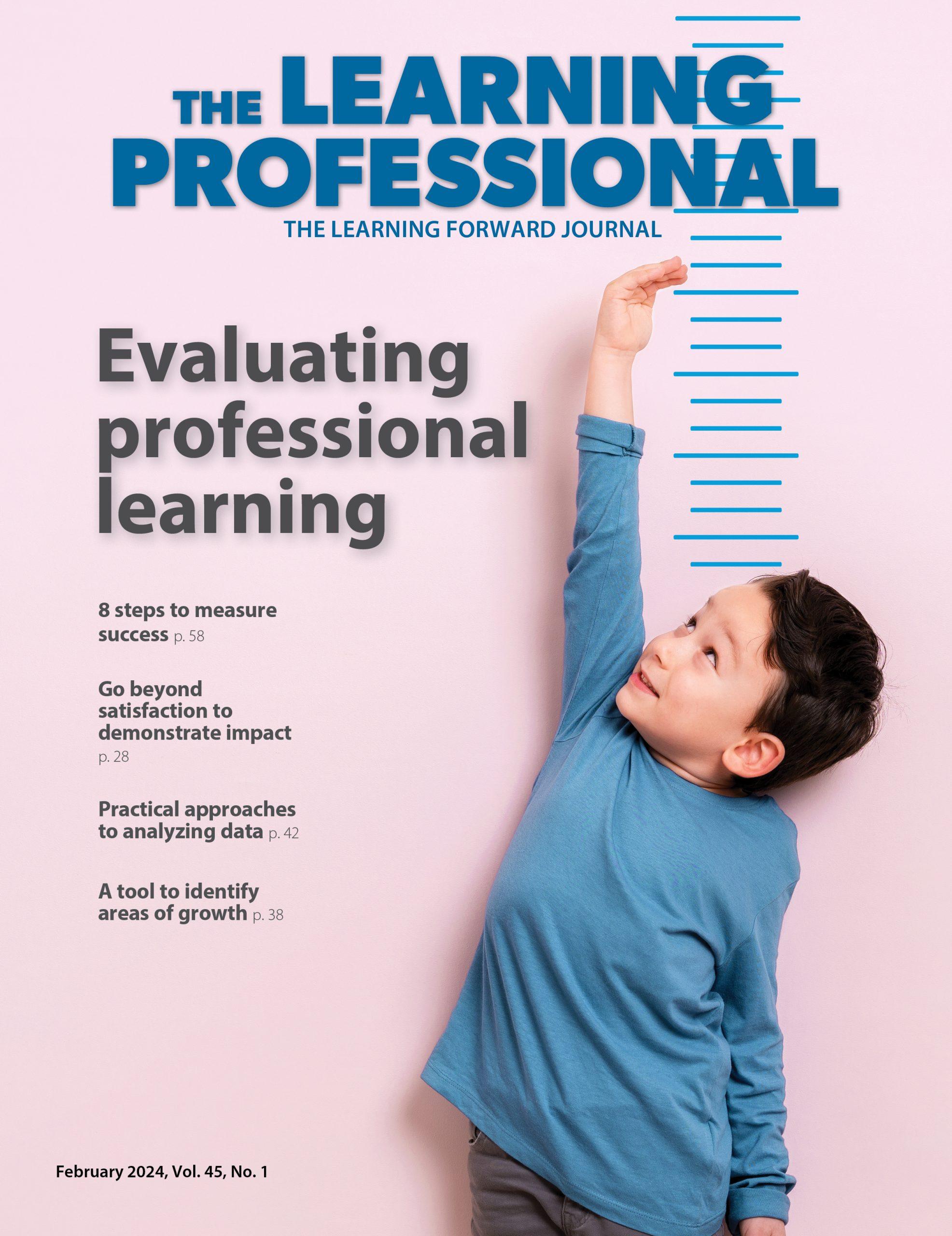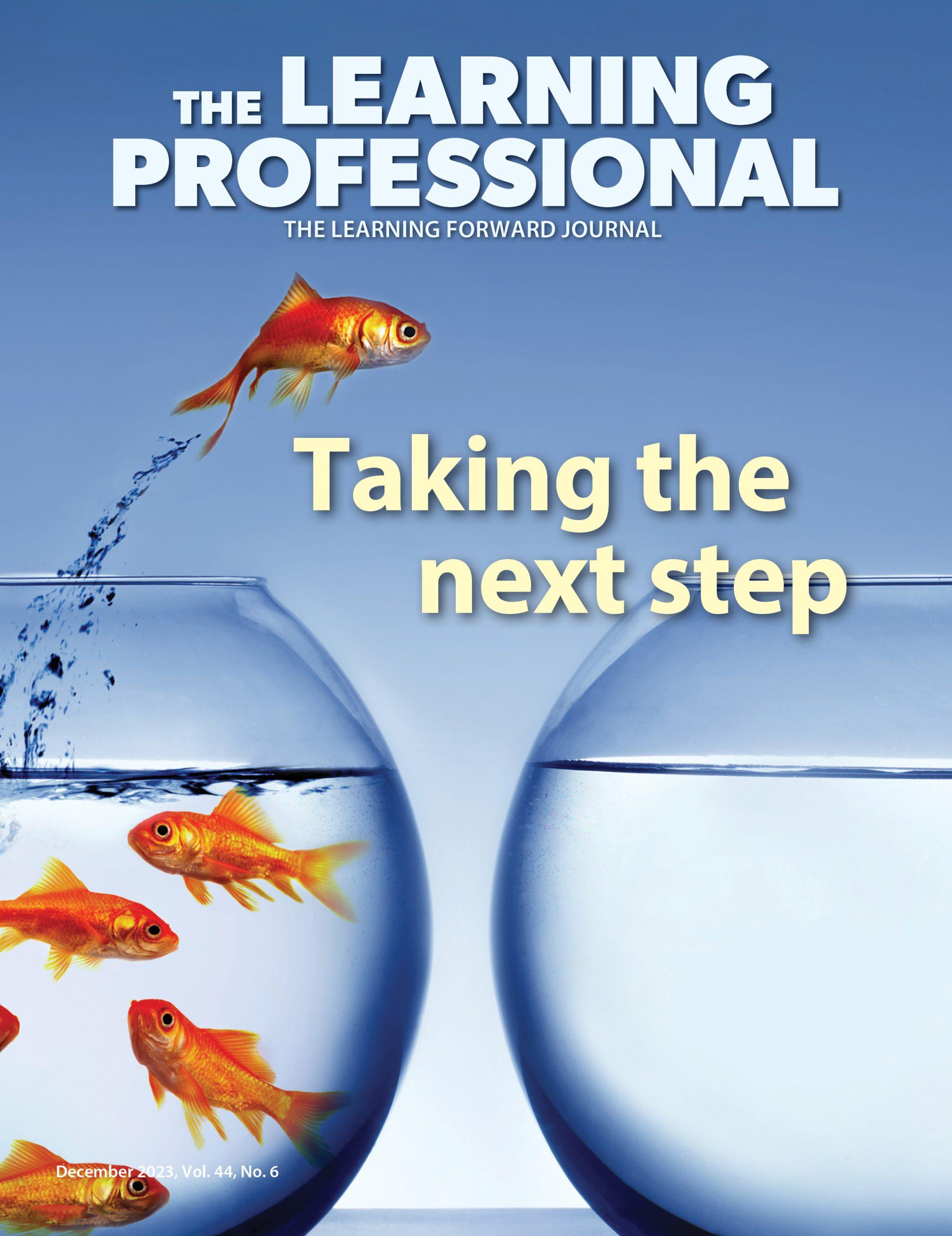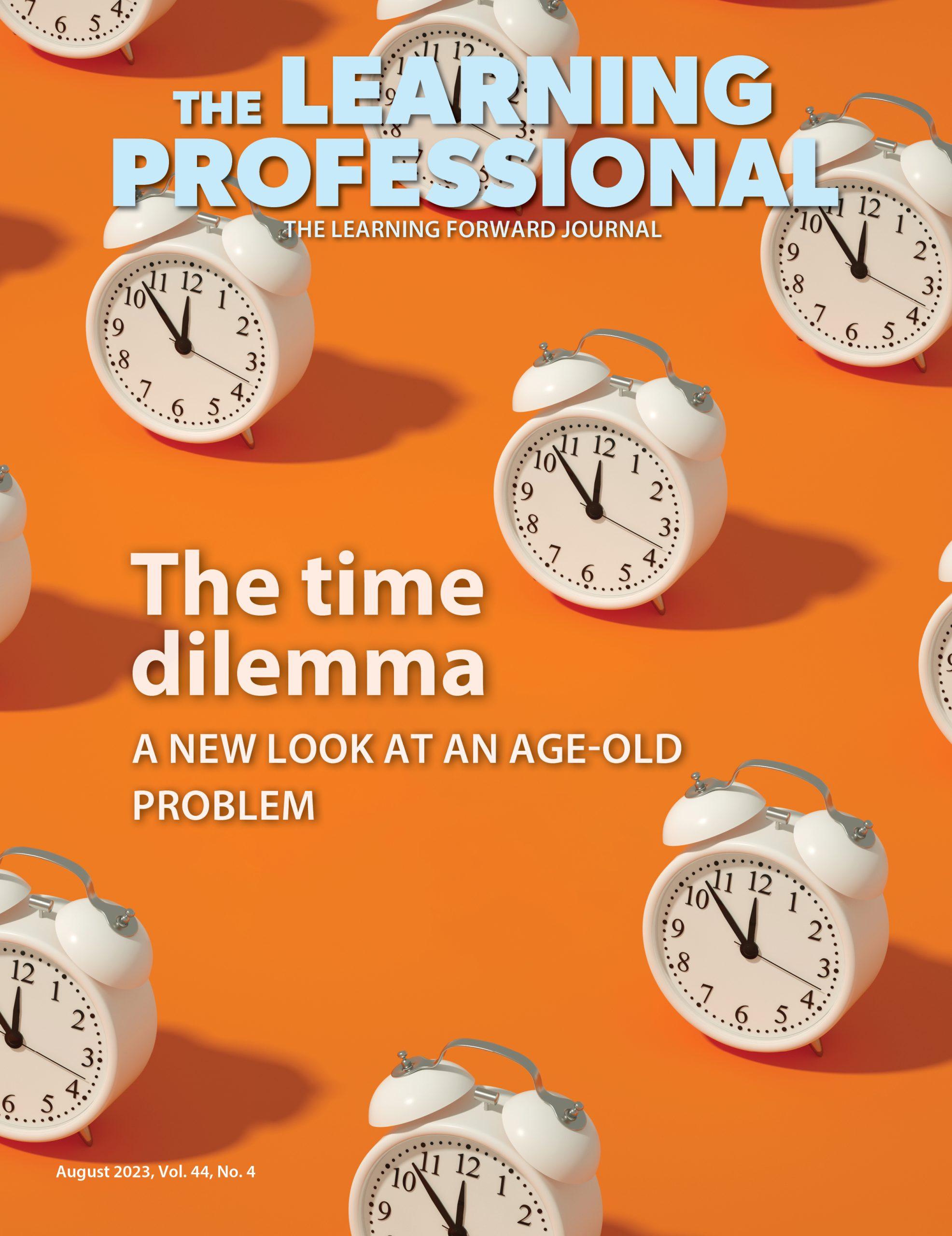When nice won't suffice
Honest Discourse Is Key To Shifting School Culture
By Learning Forward
Categories: Teacher leadershipJune 2011
Vol. 32 No. 3
How is it that a teacher leader who has followed all the recommended steps to ensure collaboration with his or her team — establishing a SMART goal, studying instructional strategies, administering assessments, looking at assessments with a protocol — still encounters superficial levels of discourse that do not move beyond the “culture of nice”?
Consider the following common snapshot of a team: Pat Carter leads a team of teachers that has set a goal to improve student writing. The team meets twice a month, has discussed articles about literacy and implemented literacy strategies, and is for the first time looking at student work. Carter uses a protocol to guide the discussion and asks her team, “What do you notice?”
One teacher responds, “I notice that the presenting teacher is a really good teacher.” Others agree and share more compliments, asking if they can borrow the teacher’s lesson.
Although Carter has led the team through the appropriate steps for successful collaboration, her team’s discus- sion is censored by the culture of nice — the underlying culture that inhibits the team from reaching a level of rigorous collaborative discourse where teachers are challenging each other’s and their own thinking, beliefs, assumptions, and practice.
The act of analyzing student work, like discussing other sensitive topics such as race or student equity, re- quires teacher leaders to foster a vulnerability-based trust (Lencioni, 2002). Teachers must be willing to expose their struggles and failures with their colleagues, and colleagues must be willing to tell the truth, or teams will go through the motions of collaborative inquiry but never see results.
The role of the teacher leader
Through skillful facilitation, the teacher leader can unearth cultural issues that lie beneath the surface and stand in the way of change. If a team collaborates without addressing and working to shift the culture of nice, the teacher leader puts the team at risk of gaining no insight into its own practice, obtaining no results (or unsustainable results) for students, going through the motions of collaboration, and ultimately dismissing the process as a waste of time.
While no one has the power to make a person or group change thinking and behaviors, teacher leaders who recognize the signs of a dysfunctional culture, respond pro- actively and in the moment, and follow up after a team collaborates can initiate moments that move the team beyond the culture of nice.
1 Recognize the signs
- Teachers rarely question each other’s and their own practice, assumptions, and beliefs. Instead they may only compliment each other, without investigating areas where the student needs to improve and how the teacher can change instruction to meet those needs. If teachers always leave a team meeting only feeling confirmed in what they have been doing, the team has probably never reached rigorous collaborative discourse.
- Teachers only share successful student work to avoid judgment from peers. While a teacher leader can still facilitate a rigorous collaborative discourse around successful work, educators stuck in the culture of nice rarely question what makes the work successful and how to elicit similar successes from students not meeting expectations.
- Teachers who share their unsuccessful student work and those examining it make excuses as to why the student underperformed. In a culture of nice, teachers are more likely to find blame with the assessment or the student rather than analyzing the instruction that may have affected the student’s work. This approach can come from good intentions, like not wanting to hurt a teacher’s feelings, but ultimately it doesn’t change instruction and can be harmful to students.
- Teachers recommend strategies for the presenting teacher to apply, but don’t critically reflect and apply them to their own instruction. Teams who are stuck in the culture of nice may not explore the broader implications of what they are discussing.
Some teachers are comfortable analyzing a colleague’s dilemma and offering recommendations, but the rigor- ous collaborative discourse stops before they recognize the changes that they may also need to make in their own classrooms. Teachers might be so narrowly fo- cused on the presenting teacher’s student work that they fail to recognize their own students have a similar problem. Others who notice the problem might resist the given strategies because they don’t think they will work with their students, or they don’t know how to implement them.
2 Respond proactively
- Create a safe environment with living norms. Before a teacher leader starts a collaborative discussion about teaching and learning, he or she can facilitate a discus- sion about the existing culture that teachers perceive in the school and team. Together, the teacher leader and the team can set up group agreements (often referred to as norms) to call awareness to moments when the discussion dwells in nice and design ways the team can go deeper. Examples of norms might be:
- Invite others to question your assumptions, beliefs, and actions;
- Go beyond the surface;
- Respectfully challenge viewpoints;
- Agree to disagree without being disagreeable; or
- Zoom in to the real issue.
Share responsibility. Teacher leaders can collaboratively generate an assessment or lesson at a meeting before the discussion of the results so that all team members take responsibility for the outcome. Teachers are more apt to speak honestly about a lesson or assessment they had a hand in creating, rather than if one of their colleagues did it alone. In addition, sharing in the decision making lessens the natural instinct for an individual teacher to defend his or her choices when he or she gets poor results. Collectively, the team can more easily move toward solutions.
Go first. If a team is taking turns presenting data, the teacher leader can offer to share his or her students’ work for team feedback first. If colleagues are offering mostly praise, the teacher leader can invite more specific, constructive observations such as, “Thank you for your positive comments. I’m concerned about the student’s problem here (indicate in data). What do you think I might do differently?”
3 Respond in the moment
Even if circumstances do not permit a teacher leader to be proactive, the teacher leader can still initiate slight moves in an existing conversation to shift to more rigorous collaborative discourse. Here are some suggestions:
Follow the team’s lead and go deeper. Although sharing successes and praise is not the ideal end result, it does put people at ease and can be a good launching point for a teacher leader. As people voice positive feedback, the teacher leader can probe them to think more critically about specifics by posing questions: “What do you mean by ‘good’? Where in the student work do you see an example of this?” or “What specifically worked? How do we know? Why do we think it worked?” and “How can we replicate success with this student? How can we help other students in all of our classes achieve similar success?”
Focus on the dilemma, not the teacher. Many protocols ask the presenting teacher to set forth a dilemma for the team to discuss, thereby creating a nonthreatening lens through which teachers can look. If the presenting teacher does not identify a concern, it could be because he or she is concerned that others will judge his or her teaching. To overcome this, a teacher leader can gently probe, “Why did you choose to share this student’s work with us?” or “What concerns do you have about this student’s work?” By writing the presenting teacher’s dilemma on chart paper or repeating it for the team, the teacher leader can revert to the teacher’s question, focusing the team to discuss the dilemma and not the teacher. For example, the teacher leader might say, “Can you find places in this student’s work that confirm the presenting teacher’s dilemma?”
Focus on students. To invite rigorous collaborative discourse, a teacher leader can focus the discussion on student learning instead of instruction. For example, instead of asking, “What could the teacher do differently?” the teacher leader might ask, “What does this student need instructionally?” “What strengths and needs do we see in this student’s work?” “What evidence in the student work demonstrates student understanding or confusion?” or “What next steps does this student need?” Focusing the discussion on students reduces any concerns of blame or judgment, and encourages the team to look more analytically, discuss more openly, and problem solve collaboratively.
Model curiosity, observation, and honesty. Whenever individuals have a difficult conversation, it is best to begin from a stance of curiosity (Stone, Patton, & Heen, 1999). If the teacher leader can model wonder, data-based observations, and honest feedback, other team members will have unspoken permission to do the same. For example, if the team has been working on descriptive writing and sees some successful uses in the student work, the team leader can comb through the work looking for places that raise questions. The teacher leader might say, “I notice the student has a lot of descriptive language throughout her writing. She uses it effectively in paragraph two, but it seems repetitive in paragraph three. I wonder if this student knows when to include detail and when to go without.” The wondering brings the discussion to a safe but more critical level, allowing for others to build on the teacher leader’s observation or feel comfortable expressing their own observations.
Redirect. If all efforts to move the conversation beyond the culture of nice fail, the teacher leader may opt to redirect. For example, the teacher leader might say, “I’ve heard a lot of positives about the student work and teacher’s instruction. With the time remaining, let’s look to see if there are specific areas in which the students can improve. For example, I notice in paragraph two of the student essay … (state positive), but then (identify problem). Does anyone else notice places where the students have this or other specific areas of need?”
4 Follow up
If team discussion about teaching and learning never moves beyond the culture of nice, individuals may gossip or vent after the meeting about what they really think. This behavior will breed a culture of not-so-nice, which will destroy any steps a team has made toward rigorous collaborative discourse. A teacher leader’s response following team collaboration can take a pulse of the culture and sustain progress.
Debrief. At the end of each meeting, have the team do a quick fist-to-five, in which team members raise up to five fingers indicating their assessment of the level of rigorous collaborative discourse achieved. Be sure to define it first. For example, a person would hold up his or her fist if he or she felt the team never moved beyond the culture of nice, one finger if there was an attempt at rigorous collaborative discourse, two fingers if it was somewhat achieved, etc. If major discrepancies in numbers occur, briefly invite people to voice their reasons and set a goal to improve at the next meeting. If someone voices a significant comment that could affect the team’s future dynamics — for instance, if someone voices that they felt personally attacked — then mention that “this issue may need more time than we have allotted” and ask permission of the team to schedule time for a deeper debrief at the next meeting.
Give exit tickets. Three useful questions teachers can answer on a half-page of paper as they leave are: What new thinking do you have? How might you apply it? How can the team and teacher leader support you?
Check in individually. Follow up with one-on-one conversations to assess teachers’ perceptions of how well the team engaged in rigorous collaborative discourse and how comfortable team members felt moving beyond the culture of nice.
Time and courage
Teacher leaders who set goals, norms, and use protocols with their teams but skirt around the culture of nice will never achieve rigorous collaborative discourse. It takes skill to recognize the signs of a dysfunctional culture and courage to respond in ways that will lead to incremental shifts in thinking and behavior. Not every team member will shift at the same time, but every time a team leader experiences a moment of discomfort or uncertainty, that leader can be assured that he or she is shifting culture.
References
Lencioni, P. (2002). The five dysfunctions of a team: A leadership fable. San Francisco: Jossey-Bass.
Stone, D., Patton, B., & Heen, S. (1999). Difficult conversations: How to discuss what matters most. New York: Penguin Books.
Learning Forward is the only professional association devoted exclusively to those who work in educator professional development. We help our members plan, implement, and measure high-quality professional learning so they can achieve success with their systems, schools, and students.
Categories: Teacher leadership
Recent Issues
EVALUATING PROFESSIONAL LEARNING
February 2024
How do you know your professional learning is working? This issue digs...
TAKING THE NEXT STEP
December 2023
Professional learning can open up new roles and challenges and help...
REACHING ALL LEARNERS
October 2023
Both special education and general education teachers need support to help...
THE TIME DILEMMA
August 2023
Prioritizing professional learning time is an investment in educators and...









